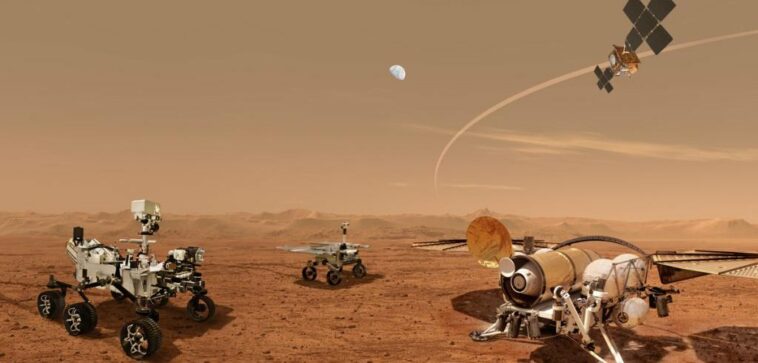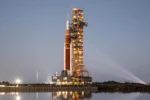The NASA Perseverance rover is presently trundling across Mars, gathering samples and doing research. With the support of the European Space Agency (ESA), those samples are expected to return to Earth in the 2030s, but China has announced that it is preparing a Mars mission that may return samples even sooner. The projected Tianwen-3 spacecraft would be easier to build than the NASA-ESA mission, and it might return clean chunks of Mars to Earth as early as 2031.
On June 20th, Sun Zezhou, the creator of China’s Tianwen-1 Mars orbiter and rover, gave a talk as part of Nanjing University’s 120th-anniversary celebration. According to Sun, the suggested sample collection mission may be launched as early as 2028, with a probe returning with the materials in 2031. That’s two years early than the NASA-best-case ESA scenario.
To reduce the danger, NASA has decided to break the sample back into many segments, although this will take longer. Perseverance is already collecting samples in its ultra-clean sealed tubes, but the mission’s next phase will be divided into many portions. A lander with a small rover will physically retrieve the tubes from Perseverance, followed by a lander with the Mars Ascent Vehicle (MAV) to launch them into orbit, where they will be picked up by a spacecraft in orbit and returned to Earth. According to SpaceNews, the ESA isn’t planning to launch the return spacecraft until 2027, and the samples aren’t expected to arrive until 2033.
Two launches utilizing Chinese Long March rockets are part of the Chinese plan. One will have a lander with a four-legged robot that will solely be used to gather samples and an ascending vehicle. The orbital return ship, which will pick up the ascending vehicle before heading back to Earth, will constitute the second component of the mission.
According to Sun, the mission will build on the Chang’e-5 lunar sample return mission’s expertise, as well as the descent and landing technology proven with Tianwen-1. The landings might occur as early as 2029. The robot won’t spend years scouring Mars for cores from various places; instead, it’ll obtain what it came for and then meet up with the ascending vehicle. As a result, the return module may depart Mars orbit as early as 2030 and arrive on Earth in July 2031.
China’s top space and political officials are said to be behind this endeavor. The China National Space Administration’s growth objectives for the years 2021-2025 emphasize the necessity of obtaining samples from Mars. China aims to launch Tianwen-2, an asteroid sampling mission, before Tianwen-3. A component of the Tianwen-3 plan will be validated by an aerobraking test with the Tianwen-1 Mars orbiter.
Source: ExtremeTech




